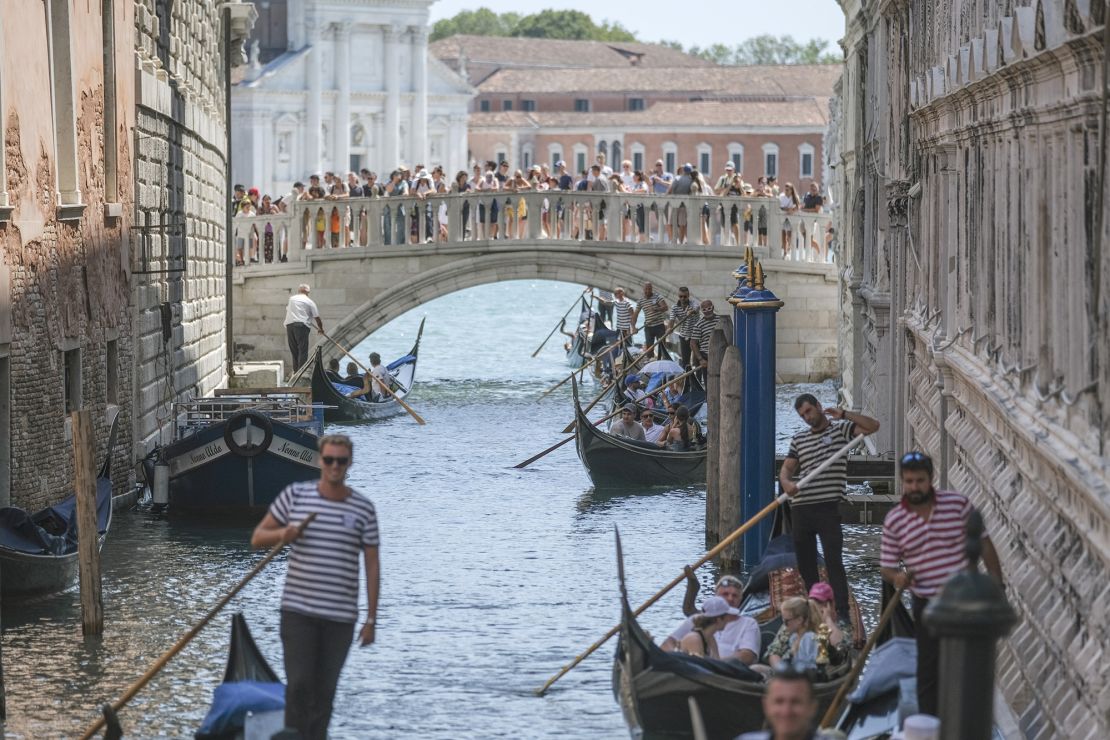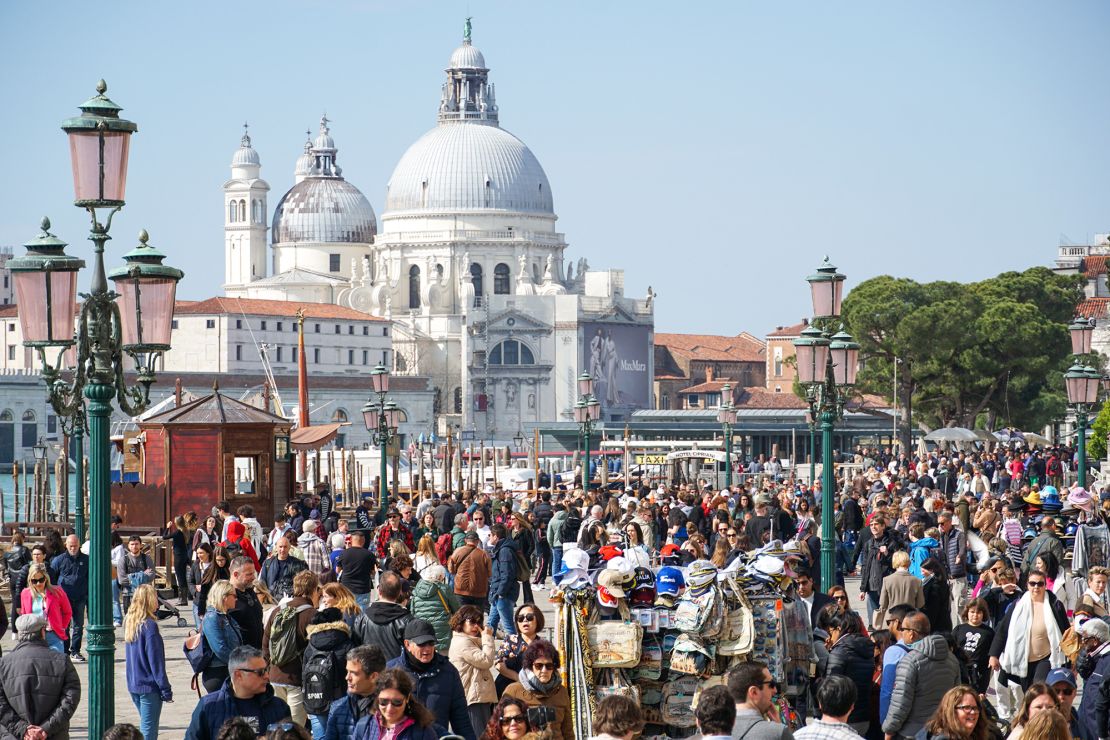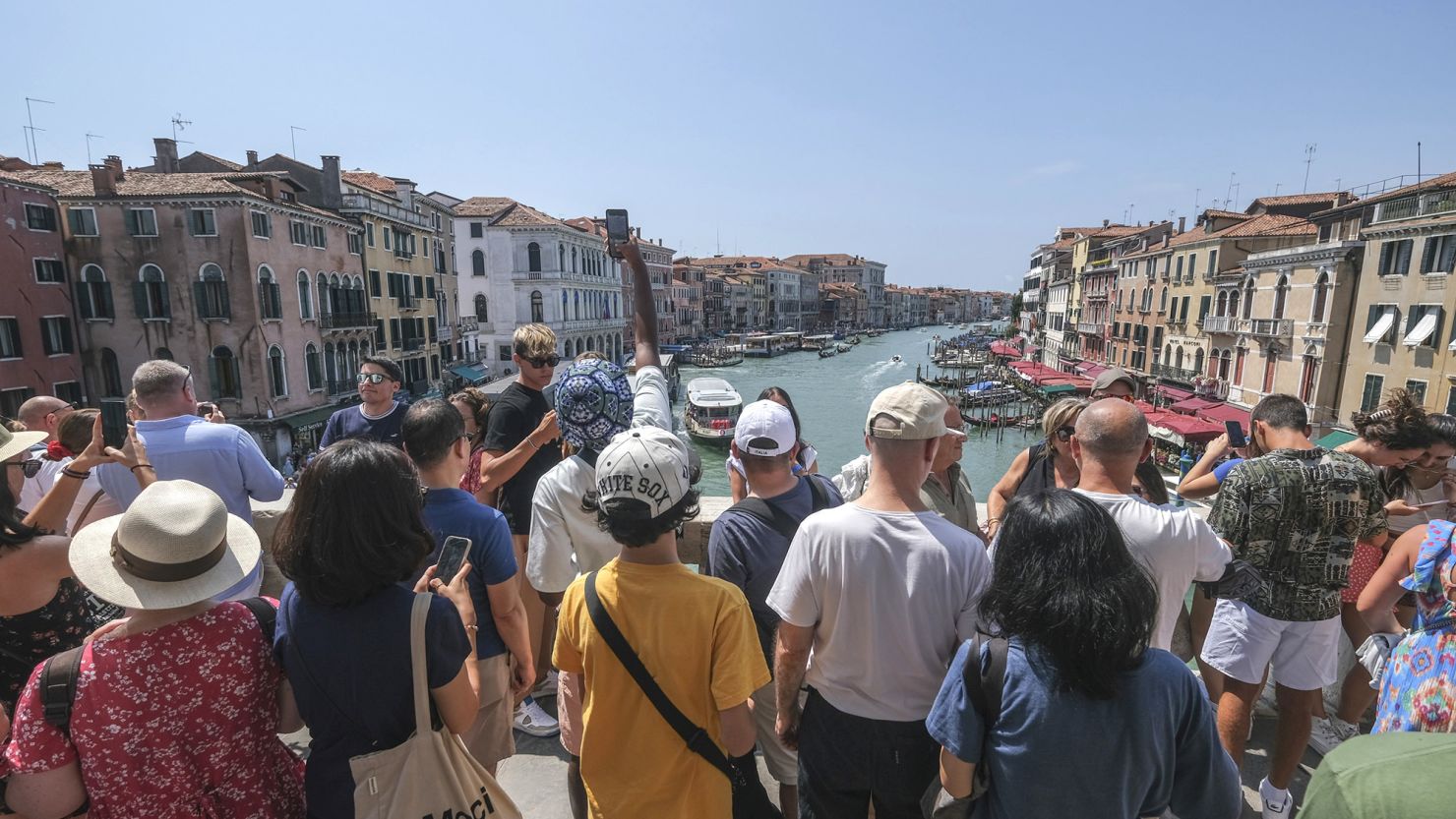Editor’s Note: Sign up to CNN Travel’s Unlocking Italy newsletter for insider intel on Italy’s best loved destinations and lesser-known regions to plan your ultimate trip. Plus, we’ll get you in the mood before you go with movie suggestions, reading lists and recipes from Stanley Tucci.
Venice has finally revealed the details for its entrance fee, making it the first city in the world to charge daytripper visitors.
Starting in spring 2024, visitors to the floating city will have to pay 5 euros ($5.40) to enter on peak days if they’re not staying the night.
But this isn’t a permanent move yet – the Venice authorities have committed to a 30-day “experiment,” according to mayor Luigi Brugnaro, who shared the news on Twitter/X.
The decision was ratified in a city council meeting on September 13, having been proposed a week earlier.
Rather than operating over a calendar month, the authorities will scatter the chargeable days across the year, picking the days which are predicted to be busiest, for example holiday weekends and peak Carnival periods. In a statement, the council said that “the aim is to discourage day tourism in certain periods.” It added that a forthcoming resolution will set out the dates on which the fee will be applicable.
Daytrippers over the age of 14 entering the “old city” of Venice – the entirety of the lagoon city – will have to pay. Exemptions exist for locals, commuters and those with second homes in the city, who have paid local property tax – as well as for tourists who are staying overnight in the municipality, and those who are participating in sporting events. Those with exemptions will still have to register online to book their trip.
The move falls short of what was previously proposed. Since 2019, the city authorities had been debating a “contributo di accesso” (access fee) for all daytrippers, throughout the year, on a sliding scale from 3 euros to 10 euros.
That top 10 euros figure has now been reduced to a provisional 5 euros. Those only visiting the “minor islands” of the lagoon will also be exempt, meaning that, as the wording currently stands, tourists only visiting Burano or Murano – two islands which suffer from overtourism – wouldn’t have to pay if they got there directly. However, most visitors from outside the Veneto region pass through the city to reach them, so would still have to pay.
Simone Venturini, the city councilor for tourism, said in a statement that changes had been made from the original proposal after taking onboard the thoughts of citizens and opposition councilors.
“Aware of the urgency to find a new balance between the rights of those who live, work and study in Venice, and those who visit the city, we are setting ourselves up as global frontrunners,” he said in a statement.
“On certain days and in certain periods, we need innovative management of [footfall] flow, in order to stem daytripper tourism.
“Tourism management is a priority for the future of our city – a city that will always remain open to everyone.”
‘We need balance’

The money taken in entrance fees will cover the cost of the booking system but nothing more, he added.
Previously it was hoped that money could go towards improving facilities and infrastructure for residents, who have to deal with overflowing bins and trash dumped on the streets by tourists, who can outnumber residents by about five to one on busy days.
In July 2022, when the council had announced the start of the system for January 2023, councilor for the economy Michele Zuin had said that proceeds would go to lowering local taxes for residents.
“The message we want to put across is that Venice is open, but visitors must understand that we need proper planning to manage the balance between residence and tourism,” said Zuin in a statement this time.
“Residents will get a better quality of life, and overnight visitors will experience more vivid emotions,” added Venturini.
The first of many?

Previously, Venturini had announced that the entrance fee – which has been discussed since 2019 – would start in January 2023.
At the time, he called the new measure a “great revolution,” and a solution for the overtourism problem that the lagoon city has been struggling with for decades, adding that, “Venice is a living city and it has to stay that way.”
He had previously told RAI, the state TV network, that the pandemic had made the city authorities reflect.
“Covid made us realize that what was an everyday occurrence before Covid isn’t acceptable anymore – the mentality has changed, as has the sensitivity [towards crowds],” he said.
At the time, he said that the booking system would “give us the chance to know how many people are predicted for that day, and to calibrate services according to the number.”
Venturini had also said previously than the booking system would flag people that they might want to change their mind.
“We can say, ‘Dear visitor, we don’t advise coming on this date because it’s Ferragosto [August public holiday] or Easter – there’ll be a lot of people so it will hinder you from having a peaceful visit, and if you make it a week later you can enjoy your visit more,” he said.
Venturini also predicted that Venice won’t be the last to introduce a charge.
“I think many other European cites who live with significant numbers of daytrippers are watching us to understand in what way they can introduce [a similar scheme],” he said.
Venice may be the first city to introduce a fee, but already one village in Italy has introduced a charge for daytrippers. Civita di Bagnoregio introduced a “symbolic” fee of 1.50 euros ($1.67) in 2013. Mayor Francesco Bigiotti planned it as a marketing stunt to attract tourists to his village on a crumbling cliff, known as the “dying town.”
The fee intrigued visitors to such an extent that visitors grew from 40,000 in 2009 to 1 million in 2018.
Venice’s well-documented struggles with tourism have resulted in UNESCO drafting a resolution to add the city to its “World Heritage in Peril” list. The resolution will be voted on later this month.



